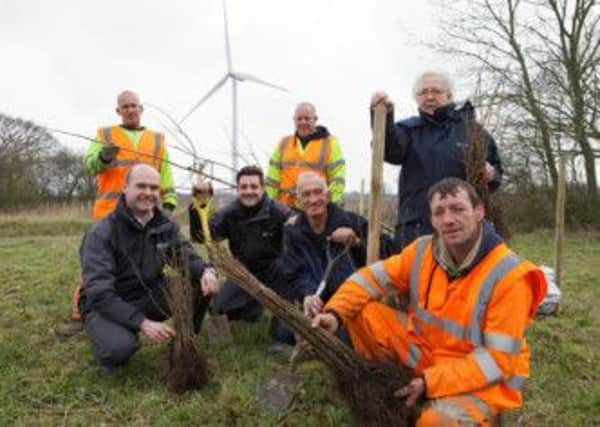Rotherham: Local botanist ‘thrilled’ with work done to preserve Penny Hill site at Ulley country park


Retired teacher and amateur botanist Barbara Littlewood has been involved with a wide range of conservation work that has been carried out around Rotherham over many years through her membership of groups, including Rotherham’s Biodiversity Forum, Sorby Natural History Society and Rotherham Naturalists Society.
She is also the author of an information pack on hedgerows that has been used in local schools and nature clubs for about twenty years, and says she is “thrilled to bits with what’s been done” at the Penny Hill site.
Advertisement
Advertisement
Barbara raised the importance of protecting and improving the hedgerows around the Penny Hill wind farm when Banks’ scheme design was going through the planning approval process, as well as highlighting the need to protect local wildlife habitats and nearby Carr Lane, an historic trackway thought to be about 1,000 years old.
Once Banks Renewables had received planning approval for the six turbine scheme, which is located to the south east of Rotherham and west of the junction of the M1 and M18, the Penny Hill development team contacted Barbara.Barbara then consulted Carolyn Jones the ecology development officer for Rotherham Metropolitan Borough Council to ensure that the environmental priorities that she’d identified were addressed during the wind farm construction.
Barbara Littlewood said: “I‘ve been involved with a lot of land and conservation survey work in the area, so when the wind farm was first mooted, my priority was to ensure that the existing hedgerows in and around the site were protected, and that a long-term approach was taken to look after the various habitats used by local wildlife.”
“Once Banks had been given planning permission, they approached me, Carolyn Jones and several naturalists to walk around the site, so we could point out areas where we felt things ought to be done, such as gaps in hedgerows that needed filling, which parts of the hedgerow could be removed for trackways, which trees could be removed to get access and which line across a field a track could take so that natural features and ditches could be preserved.”
Advertisement
Advertisement
“The Banks team responded well passing on various reports, including hedgerow survey and assessment reports, otter, water vole and bat habitat assessments.”
“I’m thrilled to bits with what’s been done, and amazed at how well it’s turned out. The newly created landscape looks great and it will develop and mature blending well into the countryside around it,” she added.
A spokesperson for Banks said: “The Penny Hill Wind Farm is bringing a range of benefits to the local area.”
“The community benefits fund associated with the wind farm will be worth over £750,000 across its 25-year lifespan, enabling Banks to deliver a range of community and environmental improvements in partnership with local people.”